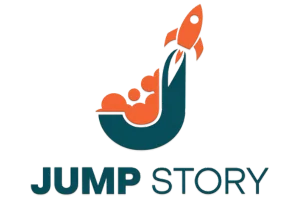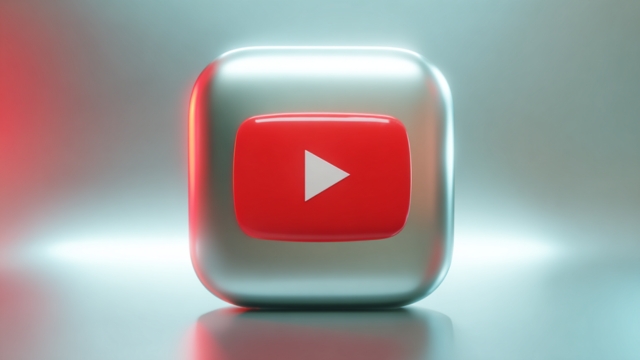A decade ago, YouTube was where consumer brands showed off flashy ads and influencers unboxed gadgets. Fast forward to 2025, and it’s a different landscape.
Business buyers aren’t just reading white papers or attending conferences; they’re on YouTube, researching, comparing, and even converting.
The platform’s evolution into a full-funnel, measurable channel has reshaped how B2B marketing leaders think about their budgets and content strategies.
Industry data backs up the shift. Gartner’s 2025 research shows that most B2B purchases now combine digital self-service with occasional human help.
Buyers want to stay anonymous longer, do their homework on their own, and only engage with a rep when ready. Video sits at the center of that journey, and YouTube is where much of it happens.
Key Points
- YouTube has become a full-funnel B2B channel, reaching buyers from awareness to conversion with measurable ROI.
- Short-form videos, connected TV, and long-form explainers each play a distinct role in influencing decision-makers.
- Using YouTube SEO, chapters, and structured data boosts discoverability and helps time-pressed buyers.
- Applying Google’s ABCD creative framework makes B2B video content more engaging and effective.
Why YouTube Matters for B2B in 2025
Buyers are researching, comparing, and deciding on their own. In 2025, YouTube stands right in the middle of that shift, giving B2B marketers a powerful way to reach, educate, and influence decision-makers when it matters most.
Buyers Are Digital First and Video Hungry
Think with Google reports that almost half of B2B spending already happens online, and most buyers expect to increase their use of digital channels over the next few years.
That means marketers must meet buyers where they’re researching, and in formats that work. Video is consistently ranked as one of the most helpful content types for evaluating complex decisions, from enterprise software to industrial equipment.
Wyzowl’s annual video marketing study adds another layer: the vast majority of businesses use video and plan to keep investing because it delivers ROI and lead generation.
HubSpot’s 2025 State of Marketing shows short-form video delivering some of the highest returns in digital marketing.
Your Audience Is Watching on the Biggest Screen in the Room
On connected TVs, YouTube now leads all media distributors by share of US TV viewing. Nielsen’s April 2025 data shows it holds 12.4 percent of total time spent on TV.
For B2B marketers, that means your thought leadership clips, customer stories, and product walk-throughs aren’t limited to small screens anymore. In fact, they’re reaching executive decision-makers in a high-attention environment.
Think with Google also highlights that hundreds of millions of hours are watched daily on TV devices, reinforcing that YouTube is not just mobile. B2B marketers can now treat YouTube as a premium TV platform with all the targeting, analytics, and creative flexibility digital brings.
What YouTube Does Across the B2B Funnel
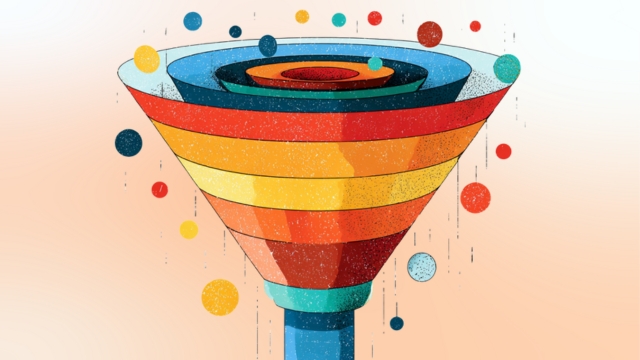
YouTube now powers every stage of the B2B buyer journey, from sparking first impressions to nudging decision-makers toward action.
1. Reach and Early-Stage Awareness
YouTube’s cross-device reach and intent-rich environment let brands show up where buyers are learning the landscape.
Google’s ABCD creative framework shows that well-executed YouTube ads drive a 30 percent lift in short-term sales likelihood and a 17 percent lift in long-term brand contribution on average. That’s a strong basis for top-of-funnel investment that compounds later.
2. Education and Consideration
Explainers, demos, and webinars hosted on YouTube provide scalable education. Wyzowl reports that explainer videos consistently increase purchase confidence, critical in B2B environments where deals are large and the stakes are high.
You can also make videos more useful and discoverable in Google Search via chapters and key moments.
Google’s Search Central outlines how to enable key moments through structured data or YouTube timestamps. Done right, this creates a seamless research experience for time-pressed buyers.
3. Conversion and Pipeline
YouTube is now built for action, not just views. Google’s Demand Gen campaigns reach buyers across YouTube, including Shorts, with formats designed to inspire consideration and drive leads or sales.
Lead forms can be attached directly to YouTube ads, capturing interest without the viewer ever leaving the video.
4. Account Influence and Buying-Committee Alignment
Gartner’s data shows most B2B deals involve multiple stakeholders.
Long-form demos, integration overviews, and customer proof on YouTube meet that requirement while being easy to distribute across the committee.
Marketers can use playlists or chapters to direct each role to the most relevant section.
YouTube Formats That Work for B2B
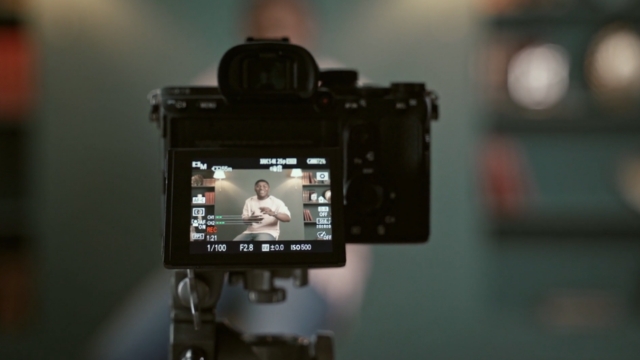
Not all video styles land the same way with business buyers. Before you hit upload, it pays to know which YouTube formats actually move the needle for B2B:
Long-Form Video for Deep Learning
Whiteboard sessions, product tours, technical talks, and recorded webinars give professional audiences the substance they expect.
Paired with chapters and clear descriptions, these assets can rank in Google and YouTube search results.
Shorts for Reach and Retargeting
Shorts can introduce value propositions and tease deeper content. Google’s Demand Gen documentation now supports vertical creatives that run in Shorts placements, helping B2B brands blend reach with lower-friction calls to action.
Shorts can introduce value propositions and tease deeper content, similar to how a lyric video maker can turn snippets of music into a visually compelling teaser.
Connected TV for Leadership Audiences
The CTV shift means executives increasingly encounter business content on the couch.
With YouTube leading US TV viewing share as of May 2025, B2B teams can run leadership storytelling and category narratives in a premium placement, then follow up with precise mid-funnel sequences on desktop and mobile.
Creative That Drives Outcomes
Google’s ABCD framework distills thousands of ad tests into four creative principles that lift both short-term conversions and long-term brand effects. Here’s how to apply it to B2B storytelling:
Principle
Action for B2B Videos
Attention
Hook quickly with a problem statement or provocative metric
Branding
Introduce who you are early and naturally
Connection
Show people, outcomes, and proof so buyers can see themselves succeeding
Direction
Use strong on-screen prompts and voiceover cues that tell viewers what to do next
Google’s official guide provides examples, safe zones, and execution tips you can adapt to B2B scripts and storyboards.
Distribution, Discoverability, and YouTube SEO
YouTube is a search engine in its own right. To capture that opportunity:
- Structure your videos: Add timestamps or chapters. This powers key moments in Google Search and improves retention.
- Use accurate metadata: Titles that include the job to be done, clear descriptions mirroring buyer keywords, and relevant tags improve discovery.
- Publish on your site too: Host or embed your YouTube videos on relevant pages and add VideoObject structured data. Google’s developer pages explain how to implement Clip markup and SeekToAction correctly.
- Mind page experience: Meeting Core Web Vitals and page experience guidelines helps search performance and user satisfaction.
Practical Campaign Architectures B2B Teams Are Using

Smart B2B marketers are no longer guessing how to use YouTube, as they’re running tested, structured campaigns built for reach, education, and conversion.
Below are a few practical architectures that show how leading teams make it happen.
1. Full-Funnel YouTube with Demand Gen
- Goal: Net-new pipeline from greenfield audiences
- Prospecting: Run Demand Gen with multiple creatives — a 15-second problem opener, a 30- to 60-second solution overview, and a 6-second bumper for coverage. Enable Shorts placement with 9:16 assets for incremental reach.
- Engagement: Sequence viewers into long-form explainers and customer stories on YouTube. Apply ABCD to keep recall high on the second exposure.
- Conversion: Use lead form assets on video to capture demo requests or gated offer sign-ups directly from the ad.
- Measurement: Track primary conversions and view-through performance. Compare against the legacy Video Action baseline, as Google notes parity in conversions and cost per action when upgrading to Demand Gen.
2. Category Leadership via CTV plus Retargeting
- Goal: Reach senior stakeholders and shape the problem definition
- CTV Flight: Place a high-production leadership narrative on YouTube CTV. Optimize for attention in the first five seconds and clarity of your point of view. Nielsen’s 2025 figures justify CTV inclusion in your media mix.
- Retargeting: Follow CTV viewers with desktop and mobile explainers and integration demos.
- Action: Retarget engagers with lead form video ads and solution pages that embed the same videos with key moments and structured data for Search.
3. Always-On Education for Long Sales Cycles
- Goal: Reduce friction and regret in complex purchases
- Editorial Cadence: Weekly Shorts that answer one tactical problem and monthly long-form deep dives that roll into playlists.
- Search Integration: Each long-form video gets chapters in the YouTube description and VideoObject schema on its corresponding resource page.
- Lifecycle Nurture: Use remarketing lists of viewers to promote webinars, trials, and ROI calculators.
What to Publish on YouTube for B2B
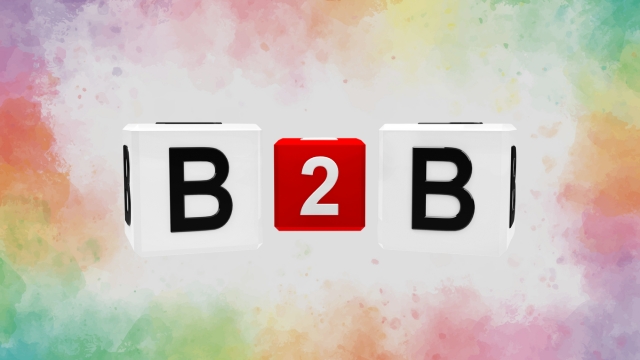
Content types that consistently perform:
- Explainers and product walkthroughs that solve specific jobs to be done.
- Customer stories with measurable outcomes and honest context.
- Integration and architecture demos addressing real buyer questions from technical stakeholders.
- Webinars and virtual events hosted on YouTube for discoverability and replay value.
- Short teasers and highlight cuts that drive back to long-form proof.
How to Write B2B YouTube Scripts That Convert
Use the ABCD framework to shape the script and storyboard. Then apply B2B-specific best practices:
- Lead with the problem in the first three to five seconds. Show a real metric or symptom that buyers recognize.
- State who it’s for, so the right personas stay engaged and others self-select out.
- Show how, not just the what. Screen captures, architecture diagrams, and implementation steps build confidence.
- Layer social proof with on-screen stats and short quotes from named customers.
- Close with a crystal-clear next step, such as booking a live demo or downloading the RFP checklist.
Measurement That the CFO Will Respect
YouTube offers a stack of metrics that map to the B2B funnel:
- Attention and recall: view rate, average watch time, and brand lift, where available.
- Consideration: earned subscribers, playlist completions, and searches for your brand after exposure.
- Action: lead form submissions on YouTube, site conversions from viewers, and assisted conversions from view-through.
On the organic side, treat YouTube like a search. Chapters and key moments can expose the precise section a buyer needs and increase click-through from Google’s results.
Keep Video Quality High and the Program Sustainable

- Editorial Operating Model: Plan monthly themes tied to your pipeline objectives. Align Shorts, long-form videos, and webinars under a single narrative arc.
- Production Standards: Adopt a standard lower third, thumbnail system, and sound mix. Tie on-screen text to your keyword targets and CTA.
- Accessibility and Compliance: Upload captions, provide transcripts, and ensure claims are supportable. This improves watch time and search while serving all audiences.
- Page Experience for Embedded Videos: Meeting Core Web Vitals and general page experience recommendations improves search eligibility and user satisfaction.
Common Pitfalls and How to Avoid Them
- Treating YouTube as only a top-funnel channel. Modern formats and lead forms can capture demand directly.
- Publishing without chapters or schema. You miss key moments in Google Search and frustrate busy buyers.
- Ignoring TV. Senior stakeholders often watch on connected TVs, which YouTube dominates.
- Measuring only the last click. Use view-through, brand lift, and assisted conversions to capture YouTube’s influence across the long B2B cycle.
Sample B2B YouTube Content Calendar
Week
Video Type
Working Title
Primary CTA
Notes
1
Shorts (0:20)
The 3 metrics your CFO cares about in [Category]
Download ROI model
Hook in first 3 seconds; vertical format for Shorts placement
1
Long-form (8:00)
How [Your Platform] integrates with [Ecosystem]
Book a demo
Add chapters and embed with VideoObject schema for key moments
2
Customer story (3:00)
How [Customer] cut cycle time by 37 percent
View full case study
Use the ABCD structure for recall and persuasion
3
Webinar replay (25:00)
Architecting a secure [Solution] for enterprise rollout
Talk to an expert
Buyers value webinars and digital events in evaluation
4
Shorts (0:30)
1 integration trick that saves hours
Try the sandbox
Retarget viewers of weeks 1 to 3 with Demand Gen
Budget and Media Planning Pointers

- Balance CTV and mobile to cover executive and practitioner viewing habits. Nielsen’s 2025 reporting confirms YouTube’s TV dominance; mobile still drives responsive actions and lead capture.
- Use a multi-format creative set in Demand Gen to reach audiences across Shorts, in-stream, Discover, and Gmail. Test vertical, square, and landscape assets.
- Sequence by engagement: viewers of Shorts get longer explainers; explainers viewers get retargeted with lead forms and demos.
Benchmarks and What to Watch in 2025
- Video adoption and ROI: Most marketers use video and plan to increase investment due to ROI. Expect strong competition on attention and quality.
- Short-form growth: Short-form delivers high ROI, but depth still belongs to long-form demos and stories. Build both.
- TV viewership share: YouTube’s share of TV time is at record levels, keeping CTV inventory central to brand budgets.
- Creative science: Apply ABCD rigor and keep experimenting. Unskippable Labs outlines test designs you can borrow.
Step-by-Step Launch Checklist
- Define buyer jobs and objections that the video must solve at each stage.
- Map your playlist structure to the journey: introductions, deep dives, proof.
- Script to ABCD with a clear, spoken CTA and on-screen prompts.
- Produce three core formats for each theme: a 15-second teaser, a 60- to 120-second explainer, and a 6- to 10-minute deep dive.
- Publish with chapters and clean metadata; embed on relevant pages with VideoObject structured data.
- Launch Demand Gen with vertical assets for Shorts, plus in-stream and in-feed variations. Add lead form assets for demo requests.
- Set up measurement for view-through conversions, Search lifts on brand queries, and assisted the pipeline.
- Iterate monthly using ABCD diagnostics, audience retention graphs, and creative tests suggested by Unskippable Labs.
Bottom Line
View this post on Instagram
YouTube has matured into a credible, measurable engine for B2B growth. Buyers spend more of their journey self-educating on video, and YouTube meets them on mobile, desktop, and the living room TV.
With Demand Gen for action, ABCD for creative effectiveness, and Search-friendly publishing practices to increase discoverability, YouTube can move the metrics that matter most: qualified demand, sales velocity, and brand preference among the whole buying committee.
Treat your channel and ad account like a product. Ship consistently, test deliberately, and build a library of helpful videos that answer the internet’s questions about your category better than anyone else. The B2B teams doing that in 2025 will be the ones everyone else is watching tomorrow.
